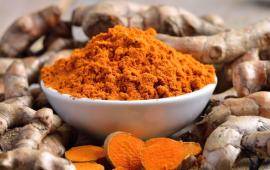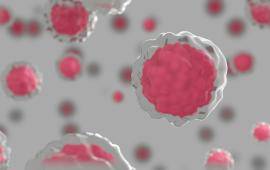
Breast Cancer natural treatment
Treatment is primarily focused to reduce the side effects of chemotherapy and radiotherapy.
During chemotherapy treatment, it is important to minimize side effects, to be better tolerated and to complete the protocol cycles without interruption. It is necessary to control the immunity by leukocyte count test, since if the count is less than 3000, chemotherapy is postponed until it reaches these levels. On the other hand, the immune system is important in the control of cancer growth and once the chemotherapy cycles are finished it is necessary to recover the normal values of leukocytes in the shorter possible time.
There are formulas of chinese herbs that boost the immune system. Intravenous vitamin C also helps to strength the immune system. Side effects such as nausea, vomiting and tiredness, can be improved with precise chinese herbs formulas addressed to strengthen the digestive system, as well as acupuncture.
Intravenous vitamin C improves fatigue associated with the administration of chemotherapy, boost the inmune system and has antitumor effect
When Taxol is administered there is a risk of neurological toxicity that can affect the distal parts of the limbs (hands and feet). This side effect can be prevented or improve with acupuncture.
Integrative oncology can also help alleviate the side effects of radiation therapy, such as radio dermatitis or fatigue. The effects of long-term radiation therapy can also be diminished through the use of antioxidant nutrients.
In the treatment of cancer, it is very important to remove the cancer stem cell, so surgery is always the treatment that is associated with the best prognosis. Chemotherapy and radiotherapy are also addressed to eliminate cancer cells, but they cause significant side effects and weaken the body. Therefore, recovering and strengthening the body after these treatments, helps prevent cancer recurrences.
The diet plays a very important role to remove the toxicity of the treatments and to improve quality of life.
There are scientific studies on the anticancer effects of some Chinese Herbs in breast cancer, such as Radix Codonopsis and Atraylodes macrocephalae.
There are also scientific studies on the use of orthomolecular medicine (vitamins and minerals) in breast cancer that can help increase the survival and quality of life of these patients.
PH's control focused to reduce acidity levels in the body and an adequate diet helps to better recovery and control of cancer disease.
Breast Cancer: Types 
Breast cancer originates anatomically in the ducto-lobular terminal unit of the mammary gland. It originates in the cells and structures of this gland, which is why this type of cancer is an adenocarcinoma. The prefix “adeno” means gland.
When cancer cells originate in the milk ducts it is called Ductal Carcinoma.
When it goes towards the lobule the result is Lobular Carcinoma.
Carcinoma "In situ"
It is called “in situ” when malignant cell proliferation occurs inside the mammary duct, without penetrating its basal membrane wall, that is, without invasion or infiltration of the surrounding tissue.< /p>
It is called:
Ductal carcinoma in situ (DCIS) or intraductal carcinomaif it is located within a milk duct Its incidence has increased in recent years. This type of tumor is frequently multicentric (several lesions in the same breast) and bilateral (both breasts are affected).
Lobular carcinoma in situ (LCIS) if it is located within a lobule. This condition rarely develops into invasive cancer. However, having lobular carcinoma in situ in one breast increases the risk of cancer in both.
Currently it is unknown which in situ tumors and what percentage become invasive tumors. The time this occurs can be as long as 6 to 10 years.
Invasive or infiltrating carcinoma
This is the name given to malignant cell proliferation that crosses the natural anatomical border of the duct or lobule, invading the healthy tissue that surrounds it. Invasive breast cancer can spread to other parts of the body through the lymphatic and blood systems.
There are basically two types of invasive breast cancer:
Ductal carcinomas: they originate in the cells that line the milk ducts (ducts through which milk circulates to the nipple).
It is the most common type, representing 80% of infiltrating breast cancers.
Lobular carcinomas: They originate in the cells of the mammary lobules, where milk is produced. Its incidence is much lower, 10%.
Breast Cancer: Stages 
Breast cancer originates anatomically in the ducto-lobular terminal unit of the mammary gland. It originates in the cells and structures of this gland, which is why this type of cancer is an adenocarcinoma. The prefix “adeno” means gland.
When cancer cells originate in the milk ducts it is called Ductal Carcinoma.
When it goes towards the lobule the result is Lobular Carcinoma.
Carcinoma "In situ"
It is called “in situ” when malignant cell proliferation occurs inside the mammary duct, without penetrating its basal membrane wall, that is, without invasion or infiltration of the surrounding tissue.< /p>
It is called:
Ductal carcinoma in situ (DCIS) or intraductal carcinomaif it is located within a milk duct Its incidence has increased in recent years. This type of tumor is frequently multicentric (several lesions in the same breast) and bilateral (both breasts are affected).
Lobular carcinoma in situ (LCIS) if it is located within a lobule. This condition rarely develops into invasive cancer. However, having lobular carcinoma in situ in one breast increases the risk of cancer in both.
Currently it is unknown which in situ tumors and what percentage become invasive tumors. The time this occurs can be as long as 6 to 10 years.
Invasive or infiltrating carcinoma
This is the name given to malignant cell proliferation that crosses the natural anatomical border of the duct or lobule, invading the healthy tissue that surrounds it. Invasive breast cancer can spread to other parts of the body through the lymphatic and blood systems.
There are basically two types of invasive breast cancer:
Ductal carcinomas: they originate in the cells that line the milk ducts (ducts through which milk circulates to the nipple).
It is the most common type, representing 80% of infiltrating breast cancers.
Lobular carcinomas: They originate in the cells of the mammary lobules, where milk is produced. Its incidence is much lower, 10%.
Breast Cancer: Conventional treatment 
<p dir="ltr"><strong>Therapeutic protocol or plan</strong></p>
<p dir="ltr">In the treatment of breast cancer, a protocol is followed, that is, a set of rules and guidelines (treatment plan), established based on the scientific experience that exists in the treatment of this tumor. .</p>
<p dir="ltr">These protocols, which are widely used in all hospitals, include the indications or limitations of treatment based on the following factors:</p>
<ul>
<li dir="ltr">
<p dir="ltr">Age of the patient.</p>
</li>
<li dir="ltr">
<p dir="ltr">General condition.</p>
</li>
<li dir="ltr">
<p dir="ltr">Hormonal status (premenopause, menopause).</p>
</li>
<li dir="ltr">
<p dir="ltr">Location of the tumor.</p>
</li>
<li dir="ltr">
<p dir="ltr">Phase or stage in which the disease is found (TNM).</p>
</li>
<li dir="ltr">
<p dir="ltr">Tumor hormone receptors.</p>
</li>
<li dir="ltr">
<p dir="ltr">Grade of the cells.</p>
</li>
<li dir="ltr">
<p dir="ltr">Positivity for some biological factors (for example Her2).</p>
</li>
</ul>
<p dir="ltr">The most frequently used treatments for breast cancer are surgery, radiotherapy, chemotherapy and hormone therapy.</p>
<p dir="ltr"><strong>Types of treatment</strong></p>
<p dir="ltr">Various definitions are used regarding treatment:</p>
<ul>
<li dir="ltr">
<p dir="ltr"><strong>Local Treatment:</strong> refers to treatment directed at the tumor at its place of origin or at a specific location. Surgery and radiotherapy are examples of this.</p>
</li>
<li dir="ltr">
<p dir="ltr"><strong>Systemic Treatment:</strong> refers to treatment that affects the entire body. Chemotherapy and hormone therapy are systemic treatments.</p>
</li>
<li dir="ltr">
<p dir="ltr"><strong>Adjuvant Treatment:</strong> This is the name given to the systemic and/or local treatment administered after the first treatment. The objective of this treatment is prophylactic, both at a systemic and local level, that is, it aims to reduce the risk of breast cancer recurrence.</p>
</li>
<li dir="ltr">
<p dir="ltr"><strong>Neoadjuvant Treatment:</strong> consists of administering systemic treatment before local treatment, with the aim of reducing the size of the tumor before surgery.</p>
</li>
</ul>
<p dir="ltr"><strong>Invasive breast cancer treatment protocol</strong></p>
<p dir="ltr"><strong>CLINICAL STAGE I AND II</strong></p>
<p dir="ltr"><strong>Local treatment</strong></p>
<p dir="ltr">Local treatment is the most important therapeutic weapon in the treatment of breast cancer. The first local maneuver is surgery. Conservative surgery (lumpectomy or quadrantectomy) plus axillary lymphadenectomy plus radiotherapy to the breast offers the same results as mastectomy plus axillary dissection, except in cases in which conservative treatment is contraindicated.</p>
<p dir="ltr"><strong>Complementary systemic treatment</strong></p>
<p dir="ltr">Adjuvant systemic treatment in breast cancer includes two types of therapeutic weapons: chemotherapy and hormone therapy. Chemotherapy represents a proportional risk reduction of relapse of approximately 30%, while hormonal therapy with antiestrogens represents a proportional risk reduction of approximately 40% in cases with positive hormone receptors (Estrogen and/or Progesterone) while The benefit is practically imperceptible when the receptors are negative and is independent of menstrual status. The antiestrogen whose benefit is most established is Tamoxifen, and the standard dose and duration today is 20 mg/d for 5 years.</p>
<p dir="ltr">The "standard" chemotherapy is the scheme:</p>
<p dir="ltr">AC‐Paclitaxel AC x 4 + Taxol x 8/12 weeks</p>
<ul>
<li dir="ltr">
<p dir="ltr">Adriamycin or Epirubicin + Cyclophosphamide</p>
</li>
</ul>
<p dir="ltr"> Cycle every 21 days x 4 cycles, followed by</p>
<ul>
<li dir="ltr">
<p dir="ltr">Weekly Paclitaxel x 8 or 12 weeks</p>
</li>
</ul>
<p dir="ltr"><strong>Biological therapies</strong></p>
<p dir="ltr">Patients with Her2-positive tumors should receive adjuvant treatment with Trastuzumab regardless of whether they are also treated with Chemotherapy and/or Hormonal Therapy.</p>
<p dir="ltr"><strong>LOCALLY ADVANCED DISEASE (STAGE III)</strong></p>
<p dir="ltr">Treatment will begin with induction chemotherapy with scheme</p>
<p dir="ltr">Subsequently surgery, performing mastectomy plus lymphadenectomy or tumorectomy if the initial tumor was < to T3 and is technically possible.</p>
<p dir="ltr">Chemotherapy will be completed later up to 6 cycles followed by radiotherapy.</p>
<p dir="ltr">Tamoxifen (20 mg/d x 5 years) will be added after chemotherapy to patients with positive hormone receptors.</p>
Ask for opinion and find an appropriate solution to your problem
ONLINE Doctor Consultation






